Books by Marco Rendeli
Caere 4. Vigna Parrocchiale, Scavi 1983-1989, 2003
M. Cristofani, V. Bellelli, A. Guarino, G.F. Guidi, M. Rendeli, G. Trojsi, Caere 4. Vigna Parroc... more M. Cristofani, V. Bellelli, A. Guarino, G.F. Guidi, M. Rendeli, G. Trojsi, Caere 4. Vigna Parrocchiale, Scavi 1983-1989, CNR Roma, 2003
Caere 3.2, Lo scarico arcaico della Vigna Parrocchiale, 1993
M. Cristofani, M. Boss, G. Clark, P. Moscati, G. Nardi, M. Rendeli, Caere 3.2, Lo scarico arcaico... more M. Cristofani, M. Boss, G. Clark, P. Moscati, G. Nardi, M. Rendeli, Caere 3.2, Lo scarico arcaico della Vigna Parrocchiale, CNR Roma, 1993: Il secondo volume dei materiali rinvenuti nel grande scarico della Vigna Parrocchiale databile alla fine dell'VI secolo a.C.
science and cultural heritage by Marco Rendeli
Archaeological and Anthropological Sciences, 2021
Archaeological and Anthropological Sciences, 2021
Lead isotope compositions were determined for 18 metal objects from the archaeological site of Sa... more Lead isotope compositions were determined for 18 metal objects from the archaeological site of Sant'Imbenia, NW Sardinia, dating to the end of the ninth century BCE onwards. The provenance of some objects is unambiguously traced to SW Sardinia; other objects could derive either from central Sardinia or the Iberian coastal ranges. The variety of the provenances attests to a wide trade network that spanned the entire island of Sardinia and extended to the Iberian sites.
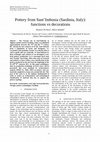
Metrology for Archaeology and Cultural Heritage, Torino, October 19-21, 2016, 2016
– The Nuragic site of Sant'Imbenia in Alghero (northwestern Sardinia, Italy) was inhabited approx... more – The Nuragic site of Sant'Imbenia in Alghero (northwestern Sardinia, Italy) was inhabited approximately between the 14 th and the 7 th century BC. During the last centuries of its life, Sant'Imbenia lived a population of locals and foreigners, i.e. Levantines and, probably, Greeks. It is obvious that as well as goods and raw materials. At Sant'Imbenia by these exchanges and contacts it was developed a new local pottery production: in it converged local taste and " foreign " knowledge. After nine years of research and analysis we have realize a new classification of the pottery produced in the site from the beginning of the IA (10 th-8 th centuries BC). In this paper preliminary data on production technology of local wares will be presented: they were obtained by archaeometric analysis (MOP, IA, XRD, XRF) on pottery and raw materials sampled in a large area around the site. This part of the work is, in our opinion, fundamental in order to realize an archaeometric and technological classification of material that has to support the pottery typology.
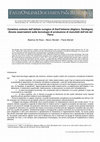
The Nuragic site of Sant’Imbenia in Alghero (north-western Sardinia, Italy) was inhabited approxi... more The Nuragic site of Sant’Imbenia in Alghero (north-western Sardinia, Italy) was inhabited approximately between the 14th and the 7th century BC. During the last centuries of its life, Sant’Imbenia lived a population of locals and foreigners; it is obvious that as well as goods and raw materials they exchanged ideas, knowledge and technologies.
The aim of the work is to identify the development of this settlement through the analysis of the ceramic technology. The study takes into account the results of the archaeometric analyses of the nuragic pottery produced during the VIII and the VII century BC, found during the excavations carried out in 2008, 2009, 2010, 2011, 2012 and 2013. Ceramic samples were studied under a stereomicroscope to observe the decorations and the surfaces; a portable Minolta CM700d spectrophotometer was used to determine the chromatic coordinates of ceramic fragments and to detect possible differences between samples in terms of their composition or production process. Later, the artifacts were studied by X-ray fluorescence, X-ray powder diffraction and optical microscopy to analyze their chemical, mineralogical and textural features.
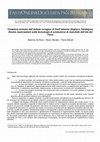
Negli studi tecnologici applicati alla ceramica, esistono quattro ambiti che si possono considera... more Negli studi tecnologici applicati alla ceramica, esistono quattro ambiti che si possono considerare fondamentali:
la sfera materiale, che comprende tutti i fattori deterministici, quali il tipo di materie prime disponibili, la possibilità di reperimento, le limitazioni climatiche e ambientali, i costi ed i tempi della produzione, ecc.
la sfera tecnologica, che comprende tutte le decisioni e le azioni che seguono una successione lineare, ma flessibile, di operazioni: l'approvvigionamento delle materie prime, la preparazione dell'impasto, il modellamento, il trattamento superficiale, l'essiccamento, la decorazione, la cottura ed il raffreddamento;
la sfera tecnologico-funzionale, che comprende tutte le indicazioni e le azioni adottate in base alla funzionalità di un manufatto;
la sfera cognitiva, che si riferisce al gruppo di riferimento ed alle scelte individuali come risposta specifica alle più generali credenze socio ideologiche.
Productio process of Iron Age pottery from S. Imbenia, Alghero.
De Rosa B., Cultrone G., Rendeli M., Estudio arqueométrico y tecnológico de la cerámica procedente del poblado nurágico de Sant’Imbenia (Cerdeña, Italia), in XVIII Congreso Internacional, Concervación y Restauración de Bienes Culturale, Libro de Actas, Granada 2011, 2011, pp. 451-454. Archaeometric analysis of the pottery coming fron the Nuragic site of S. Imbenia
Journal of Radioanalytical and Nuclear Chemistry
The implementation in the RIKEN-RAL negative muons facility of a new muon beamline monitoring and... more The implementation in the RIKEN-RAL negative muons facility of a new muon beamline monitoring and novel digital data acquisition system for gamma and X-ray spectroscopy are presented. This work also shows the high potential of the muonic atoms X-ray spectroscopy technique in non-destructive elemental characterization of archaeological samples.
Nuclear Inst. and Methods in Physics Research, A 936, 2019
The idea of the CHNET-TANDEM experiment is to develop and optimize a non-destructive technique, w... more The idea of the CHNET-TANDEM experiment is to develop and optimize a non-destructive technique, which allows analysis deep inside the sample with a good spatial resolution, using a negative muon beam. By selecting the primary muon energies appropriately, bulk analysis can be performed without destructing the sample. The experimental setup used for this experiment, made by 2 hodoscopes and 5 HpGe, allowed us to collect very interesting preliminary data concerning scan momentum, positioning and centering of the samples by means of two hodoscopes, analysis of standard material targets and elemental characterization of Nuragic ''Bronze Age'' votive ship fragments. Contents
Pottery from A. 51: archaeological and technological analyses.
Sardinia by Marco Rendeli
in M. D’Acunto, T. Cinquantaquattro edd., Euboica 2. Pithekoussai and Eubea between East and West, Proceedingis of the Conference (Lacco Ameno, Ischia, Naples) 14-17 May 2018, vol 1, Annali di Archeologia e Storia Antica 27, pp. 325-346., 2020
New excavations and research have brought to light more sherds of Euboean and Pithecusan pottery ... more New excavations and research have brought to light more sherds of Euboean and Pithecusan pottery from Sardinia, mainly from Sant’Imbenia (Alghero) and from Sant’Antioco and its territory. Previously such sherds were used to date the contexts from which they came; today their interpretation forms part of a wider analysis which starts with the stratigraphic sequences and goes on with the role of Euboean, Pithecusan, Corinthian and Ionic presence in Sardinia from the end of the 9th to the middle of the 6th centuries BC.
In the history of the ancient world, water plays an important role as the quickest way to move fr... more In the history of the ancient world, water plays an important role as the quickest way to move from one site to the other, for religious reasons, as a way to reach the Otherworld. This last aspect is analysed in the paper starting from Mycenaean larnakes, passing through Oriental myth, Greek ways of death, arriving in Villanovan Italy and Sardinia from Iron Age. It becomes a long journey following the idea of Okeanos as the limit between our world and the Other one, the navigation toward the unknown, the Otherworld of Orientalizing and Archaic phases in Etruria with the painted tombs.
Etruscology, 2017
A picture of the Etruscan presence in Sardinia.
L'Olpe Chigi. Storia di un agalma, E. Mugione ed., Atti del Convegno internazionale, Salerno 3-4 giugno 2010,, 2012
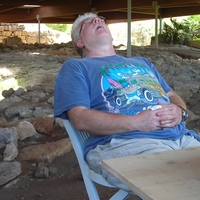
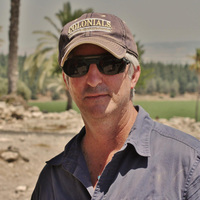

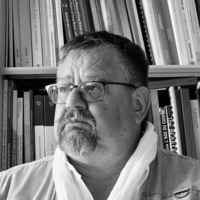
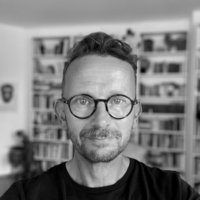




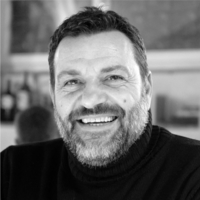

Uploads
Books by Marco Rendeli
science and cultural heritage by Marco Rendeli
The aim of the work is to identify the development of this settlement through the analysis of the ceramic technology. The study takes into account the results of the archaeometric analyses of the nuragic pottery produced during the VIII and the VII century BC, found during the excavations carried out in 2008, 2009, 2010, 2011, 2012 and 2013. Ceramic samples were studied under a stereomicroscope to observe the decorations and the surfaces; a portable Minolta CM700d spectrophotometer was used to determine the chromatic coordinates of ceramic fragments and to detect possible differences between samples in terms of their composition or production process. Later, the artifacts were studied by X-ray fluorescence, X-ray powder diffraction and optical microscopy to analyze their chemical, mineralogical and textural features.
la sfera materiale, che comprende tutti i fattori deterministici, quali il tipo di materie prime disponibili, la possibilità di reperimento, le limitazioni climatiche e ambientali, i costi ed i tempi della produzione, ecc.
la sfera tecnologica, che comprende tutte le decisioni e le azioni che seguono una successione lineare, ma flessibile, di operazioni: l'approvvigionamento delle materie prime, la preparazione dell'impasto, il modellamento, il trattamento superficiale, l'essiccamento, la decorazione, la cottura ed il raffreddamento;
la sfera tecnologico-funzionale, che comprende tutte le indicazioni e le azioni adottate in base alla funzionalità di un manufatto;
la sfera cognitiva, che si riferisce al gruppo di riferimento ed alle scelte individuali come risposta specifica alle più generali credenze socio ideologiche.
Sardinia by Marco Rendeli
The aim of the work is to identify the development of this settlement through the analysis of the ceramic technology. The study takes into account the results of the archaeometric analyses of the nuragic pottery produced during the VIII and the VII century BC, found during the excavations carried out in 2008, 2009, 2010, 2011, 2012 and 2013. Ceramic samples were studied under a stereomicroscope to observe the decorations and the surfaces; a portable Minolta CM700d spectrophotometer was used to determine the chromatic coordinates of ceramic fragments and to detect possible differences between samples in terms of their composition or production process. Later, the artifacts were studied by X-ray fluorescence, X-ray powder diffraction and optical microscopy to analyze their chemical, mineralogical and textural features.
la sfera materiale, che comprende tutti i fattori deterministici, quali il tipo di materie prime disponibili, la possibilità di reperimento, le limitazioni climatiche e ambientali, i costi ed i tempi della produzione, ecc.
la sfera tecnologica, che comprende tutte le decisioni e le azioni che seguono una successione lineare, ma flessibile, di operazioni: l'approvvigionamento delle materie prime, la preparazione dell'impasto, il modellamento, il trattamento superficiale, l'essiccamento, la decorazione, la cottura ed il raffreddamento;
la sfera tecnologico-funzionale, che comprende tutte le indicazioni e le azioni adottate in base alla funzionalità di un manufatto;
la sfera cognitiva, che si riferisce al gruppo di riferimento ed alle scelte individuali come risposta specifica alle più generali credenze socio ideologiche.
The evidence shows us a site with nuraghe and huts founded around the 14th century BC. It was profoundly transformed starting from the second half of the 9th century BC, which leads to an open public space overlooked by shops and work areas, a real market square. Important commercial relations with various areas of the Mediterranean are documented from East to West.
This essay intends to retrace the salient phases of the discovery and study of the site through the reading of its phases and the examination of the artifacts exposed to atmospheric agents and to the phenomena of instability of the wall structures will be analyzed. A fìnal study will concern the management and protection problems of the site with particular reference to the theme of protection with coverings of archaeological sites.
century BC with an important trade exchange. This approach was binary and not unilinear with, in percentage,
similar quantities in both the areas. This paper will offer a picture of Carthaginian presence in North Sardinia
and the Sardinian one at Carthage starting from the “Bir Massouda level” and reaching the 8th and 7th centuries
BC.
contacts between the Northern mining district of Etruria and the Central-Northern Sardinia. It represents the
result of contacts started in previous periods and it is indicated not only by an intense exchange of products,
but also by the phenomena of contamination between the ceramic and bronzework traditions. In such a context
Populonia (Piombino-Livorno) and Sant’Imbenia (Alghero-Sassari) represent some fields of investigation
privileged to understand the way of contact between the Nuragic and the Villanovian culture.
Chi desiderasse ricevere l'articolo può rivolgersi agli autori.